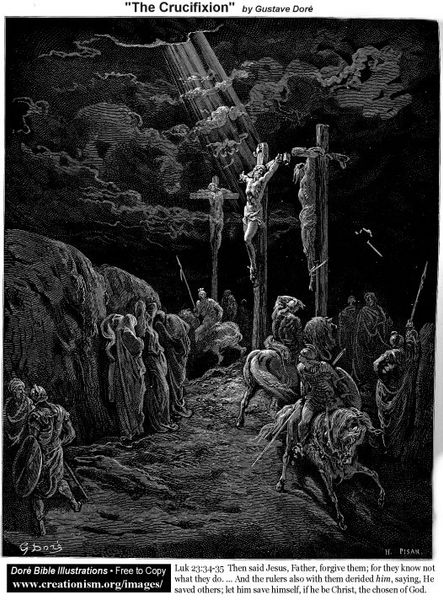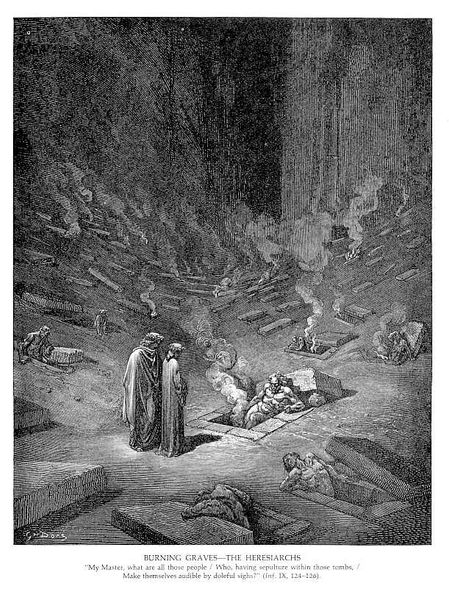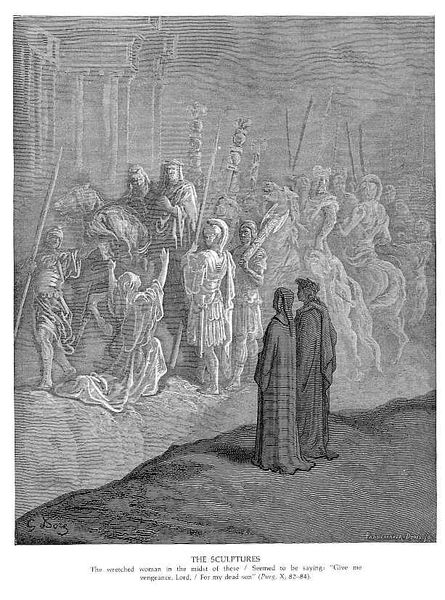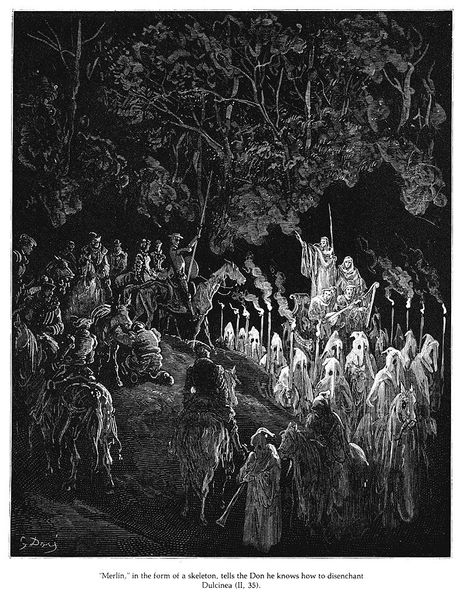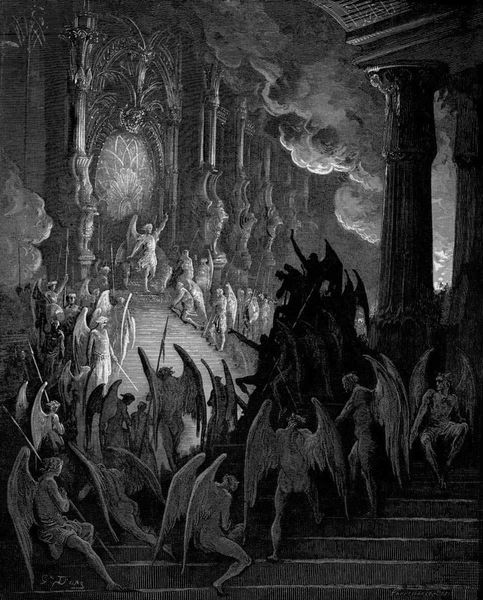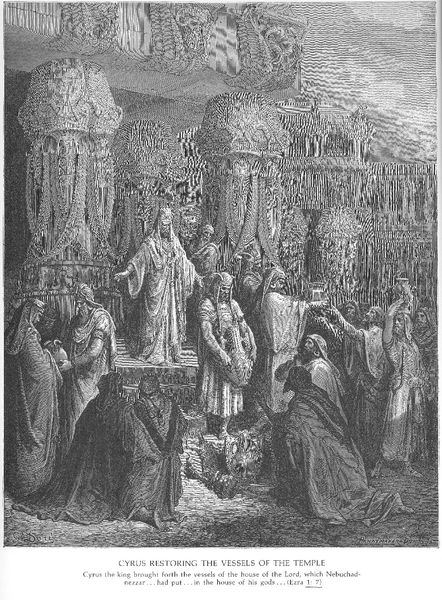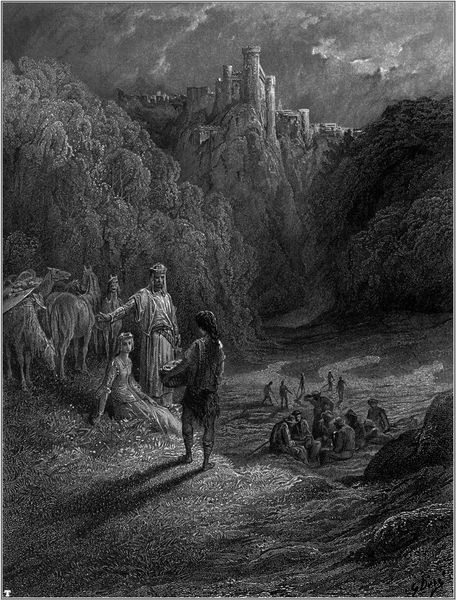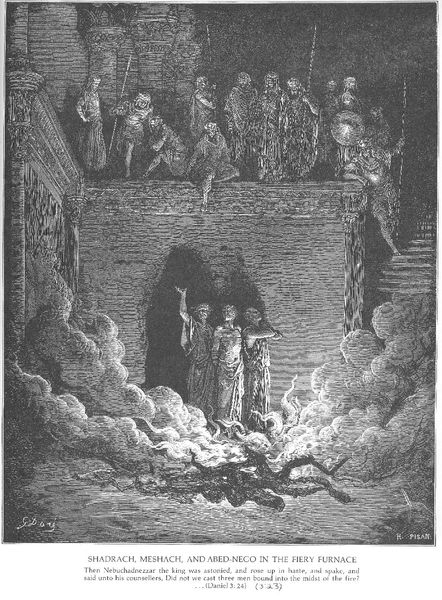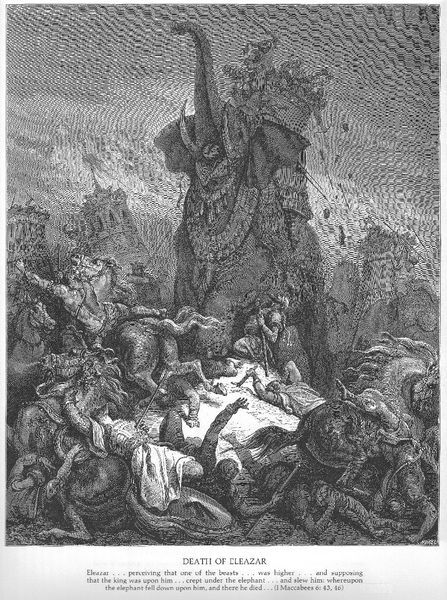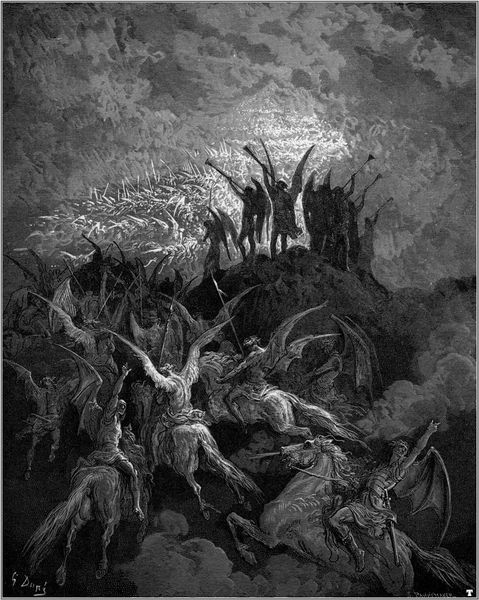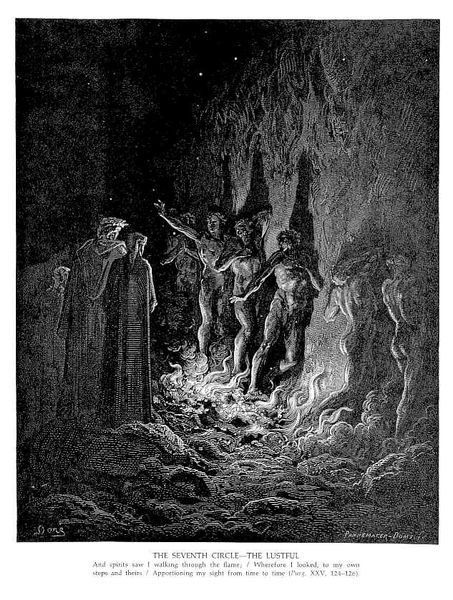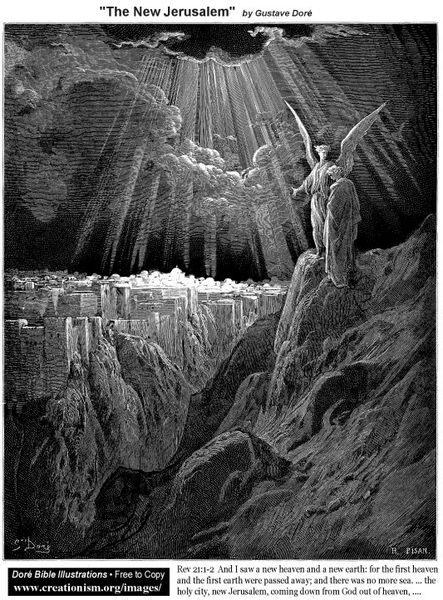
drawing, photography, engraving
#
night
#
drawing
#
narrative-art
#
war
#
dark monochromatic
#
photography
#
romanticism
#
history-painting
#
engraving
#
monochrome
Copyright: Public domain
Curator: Looking at this dark monochromatic drawing by Gustave Doré, titled "Barthelemi undergoing the Ordeal of Fire," I immediately feel the intensity of the scene. It's so dramatic! Editor: It is a striking composition, isn't it? The subject matter itself offers fertile ground for exploring power dynamics during periods of religious fervor and how the role of institutions play in such events. Dore seems concerned here with illuminating an episode in this complicated entanglement of belief and authority. Curator: Absolutely. The “ordeal by fire,” it makes you think about what that really represented. Beyond faith in divine intervention, this ritualized trial laid bare society’s prejudices onto individuals and reveals a profound intersection of power and superstition. What readings could be done of Barthelemi? Editor: Given Doré’s consistent commentary on social justice issues, it's not outlandish to imagine him questioning the validity of power exercised under the banner of piety, a common thread throughout 19th-century art critiquing established authority. His choice of engraving further enables broader dissemination among popular audiences familiar with similar scenes found in illustrated versions of the Bible or classic literary texts—essentially broadening its social impact through medium itself. Curator: And you can see this incredible range in values and textures achieved only through the laborious craft of engraving and photography which contributes to its impact, rendering this very graphic visual drama. The flickering light against those black costumes becomes quite unsettling! There’s something potent about that juxtaposition here: spectacle of presumed sanctity alongside its possible absurdities? Editor: Exactly. This imagery taps into something profoundly unsettling that persisted despite Enlightenment attempts at reasoned thought or social reformation. What should we make, therefore, concerning representations similar as vehicles either to endorse or indict prevalent norms across changing sociopolitical terrains within a global art context? What is so remarkable concerning their influence on visual culture regardless? Curator: Considering Doré's critical perspective as you've framed it, this piece pushes viewers to ask fundamental questions. Who constructs the norms? Who is sacrificed by them? Who holds responsibility concerning actions justified on premises regarding absolute truths whose effects determine realities concerning individuals? Editor: Precisely. These probing dialogues with artworks serve ultimately in questioning conventional attitudes even today since they encourage the necessary critical engagement with visual materials that constantly shape both how and who sees what within societies and themselves ultimately!
Comments
No comments
Be the first to comment and join the conversation on the ultimate creative platform.
